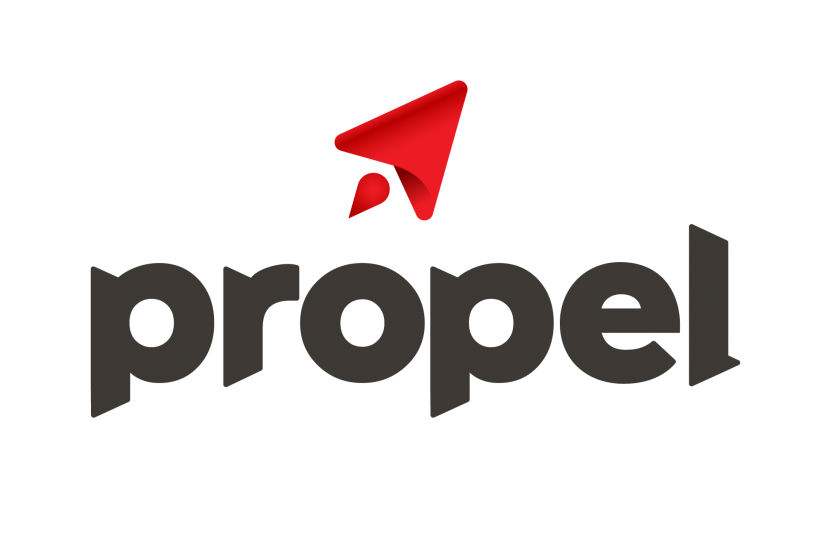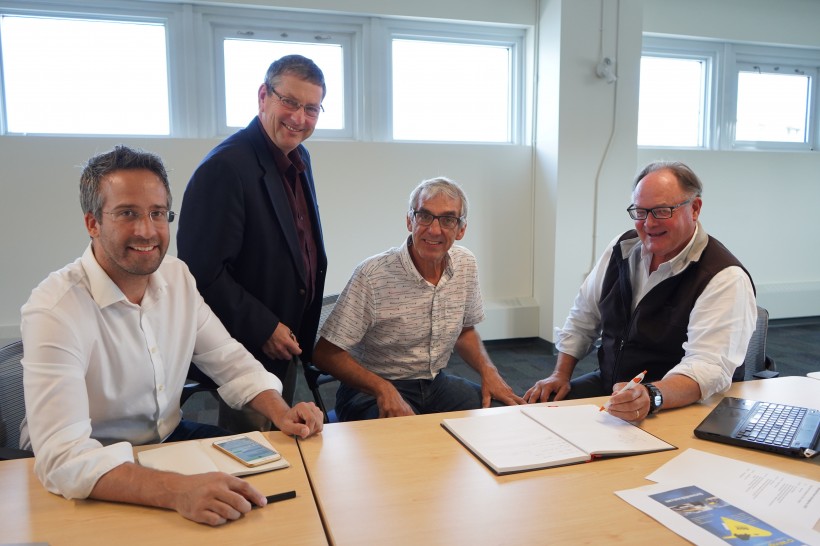A Halifax-area company is aiming to build a ready-to-use underwater platform with a suite of “lab-on-a-chip” sensors for marine research.
Dartmouth Ocean Technologies, or DOT, is the creation of president Arnold Furlong and Director of Innovation Roger Race. Furlong is a serial entrepreneur specializing in marine technology, and Race is a biologist and engineer based out of Dartmouth, Massachusetts.
The towable platform on which the sensors will be mounted already exists in the form of DOT’s V-Wing depressor—a fiberglass wing that can be outfitted with sensors and towed behind a boat.
“The long-term goal is to build a sensor or buy other sensors, put them on our wings, including the winching and deployment systems, and sell it as a turn-key system package,” said Furlong in an interview.
Based out of the COVE oceantech hub in Dartmouth, NS, DOT also offers two of its own sensors—one that detects phosphates and another that can identify DNA in the marine environment. To help with the sensors’ design, Furlong and Race enlisted the help of Dalhousie University’s Vince Sieben.
The company was founded in April 2019, initially to carry out a large service contract for a piece of equipment that Furlong had previously sold to St. John’s-based underwater imaging specialist PanGeo Subsea.
Race used to work with Furlong at Brooke Ocean Technology, and was keen to collaborate again. He owned the intellectual property for the V-Wing, which Furlong said has been consistently generating revenue for about 30 years, so the two decided to partner up and use it as a base for a plug-and-play system.
Furlong said the V-Wing can be used for underwater survey work, as well as for monitoring water temperature, depth and other metrics relevant to marine industry and scientists, among other applications.
DOT has also since released a second sensor-platform, the D Profiler, which is capable of changing its buoyancy for the purpose of moving through the water vertically, rather than horizontally. It can transmit the data it gathers via radio and mobile phone.
Because Furlong and Race’s sensors are capable of measuring the presence of organic matter in water, they can be used for projects such as testing for fertilizer runoff, monitoring sewage pollution and tracking the effects of fish farms on water quality.
“If you have an algae growing in a bay, as an example, at an aquaculture site, that may be a harmful algae starting to grow,” said Furlong. “We need to know what we’re looking for, but we can detect the bad algaes as they start to emerge.”
He added that, despite a slight slowdown in orders because of COVID-19, DOT’s product development process is largely still on schedule and the company continues to field inquiries from prospective customers.
He and Race have no immediate plans for a venture capital fundraising round, but are expecting to soon be joined by other business partners who are experts on marine sensors.
They currently employ several subcontractors and hope to hire several mechanical technologists within the next few months—possibly graduates from Nova Scotia Community College.










